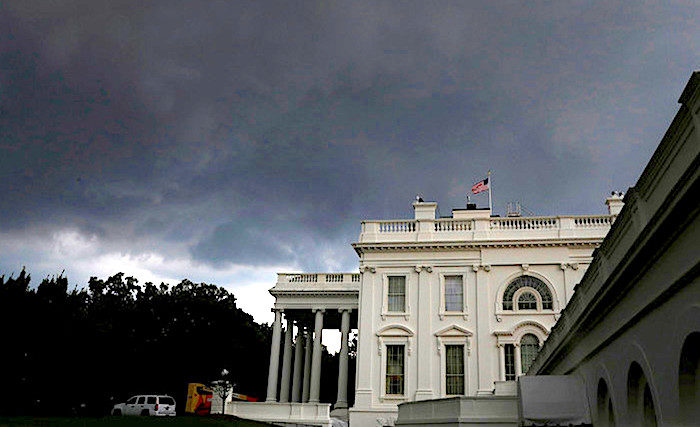
© Reuters/Leah Mills
President Trump has replaced his chief of staff, press secretary, legislative affairs director and domestic policy adviser and retooled his communications shop in a span of about three months and will soon bid goodbye to two top economic advisers.
Trump's White House has experienced a dizzying amount of staffing changes that began following his impeachment acquittal and seemed to accelerate with the arrival of new chief of staff Mark Meadows.
Trump has presided over a record amount of turnover in the Cabinet and senior levels of his administration, demonstrating a penchant for removing and replacing top officials as well as swapping existing staff into new roles.
But the recent staffing shake-ups have been striking particularly because of the proximity to the 2020 presidential election. Officials working in past administrations have been informally urged to hold off on leaving their roles in an election year until the ballots are cast in November.
"In the Bush administration, word basically went out a year before the election saying if you were going to leave, do it now, don't wait until the summer of the election," said GOP strategist Alex Conant, who worked as a White House spokesman during George W. Bush's second term.
"Running for reelection is a hard move without having staff churn inside the White House," Conant continued.
The changes have come as the Trump administration has grappled with the coronavirus pandemic and as Trump embarks on an increasingly uphill battle for reelection. Conant argued that some of the policy staff may have stayed on longer in order to help assist in the early weeks of the pandemic.
The staffing shuffles have been attributed in part to Meadows's arrival in April, which was followed almost immediately by the naming of Kayleigh McEnany, a Trump campaign spokeswoman, as White House press secretary. Trump's domestic policy adviser of more than a year, Joe Grogan, left his position in government at the end of May, and he was thereafter replaced by Brooke Rollins, who previously led the Office of American Innovation, in an acting capacity. Trump also bid farewell to Eric Ueland, his legislative affairs director, who took a role at the State Department, promoting his deputy, Amy Swonger to replace him on an acting basis.
News broke this week that Kevin Hassett, an economic adviser to Trump who returned temporarily to the White House in March to help with the response to the economic fallout from the pandemic, would leave his position this summer. That was followed by the announcement that Tomas Philipson would leave his position as acting chairman of the Council of Economic Advisers (CEA) at the end of June to return to a tenured post at the University of Chicago.
Hogan Gidley, a top White House spokesman, was also announced as the Trump campaign's new national press secretary this week.
Allies of the White House don't view the individual changes as particularly significant.
One former White House official said it wasn't uncommon for new staffers to be brought in under a chief of staff, commonly regarded as one of the more powerful advisers, and for staffers like Gidley to dispatch to the campaign side."When there is turnover at the top it's not uncommon for that [to] ripple through an organization," said the former official. "It's also not uncommon for [White House] staff to decamp for the re-elect. In this case it's going to be an all hands-on deck effort to try to turn things around."Read the remaining part of the article, which is mainly just TDS propaganda
here.
R.C.